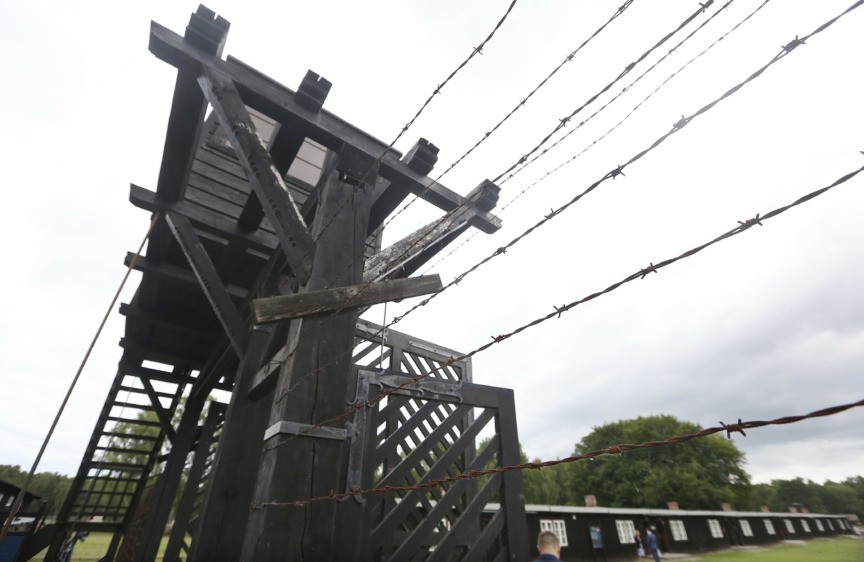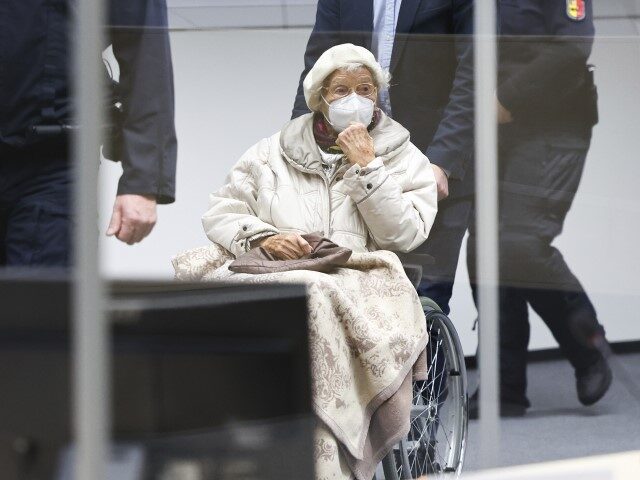A German court found a former Nazi concentration camp secretary guilty on Tuesday of complicity in the killings of over 10,000 prisoners.
Irmgard Furchner, 97, received a two-year suspended sentence Tuesday in a court in the northern German city of Itzehoe, located approximately 37 miles (60 kilometers) north of Hamburg.
Furchner was a stenographer and typist for an SS commander at Stutthof concentration camp located near Gdansk in Nazi-occupied Poland from 1943 to 1945, when she was 18 and 19 years old. She was tried in a juvenile court due to her age when she worked at the camp.

In this July 18, 2017, photo the wooden main gate that leads into the former Nazi German Stutthof concentration camp in Sztutowo, Poland, is seen. (Czarek Sokolowski/AP)
The 97-year-old apologized for what had happened in the camp, but did not admit guilt for her actions before the verdict was read, the German newspaper Der Spiegel reported.
“I’m sorry for everything that happened. I regret that I was just in Stutthof at the time,” Furchner said in court. “That’s all I can say.”
Before her trial began in September 2021, Furchner had disappeared from her retirement home and was missing for several hours before police picked her up in Hamburg.
Furchner’s defense team demanded an acquittal, arguing that prosecutors could not prove beyond a reasonable doubt that she knew about the systematic mass murders occurring inside the camp.
Dominic Gross, the judge who presided over Furchner’s trial, said that it was “simply beyond all imagination” that Furchner did not notice the killings inside the camp and that she could have resigned at any time, according to the Associated Press (AP).
Trial prosecutor Maxi Wantzen quoted a colleague of Furchner saying that it was common knowledge that Jewish prisoners were being sent to gas chambers inside Stutthof.
“Nobody could miss the smoke from the crematorium or not notice the smell of burned corpses,” Wantzen said, per Die Welt.
The judge made a rare move to make the proceedings public to be documented for historical purposes, saying that it would be “one of the worldwide last criminal trials related to crimes of the Nazi era,” the Guardian reported.
The Stutthof concentration camp was in operation from 1939 to 1945. An estimated 60,000 people died in the camp, including thousands more who died during death marches after being evacuated, according to the United States Holocaust Memorial Museum.
Many prisoners inside Stutthof died in gas chambers from Zyklon B or were killed via lethal injections by Nazi doctors. Some prisoners also succumbed to the typhus epidemics that went through the camp in the winter of 1942 and again in 1944.
Those incarcerated inside the camp included “political prisoners, accused criminals, people suspected of homosexual activity and Jehovah’s Witnesses,” the AP noted. The Holocaust Memorial Museum also noted that some Jewish prisoners were imprisoned in the camp.
The German government is currently rushing to prosecute as many suspected Nazi war criminals as possible before they die.
In June, a 101-year-old former Nazi concentration camp guard received five years in prison after being convicted as an accessory to over 3,500 deaths at Sachsenhausen concentration camp, located north of Berlin.
The statute of limitations does not apply to charges of murder or accessory to murder in Germany.
You can follow Ethan Letkeman on Twitter at @EthanLetkeman.


COMMENTS
Please let us know if you're having issues with commenting.